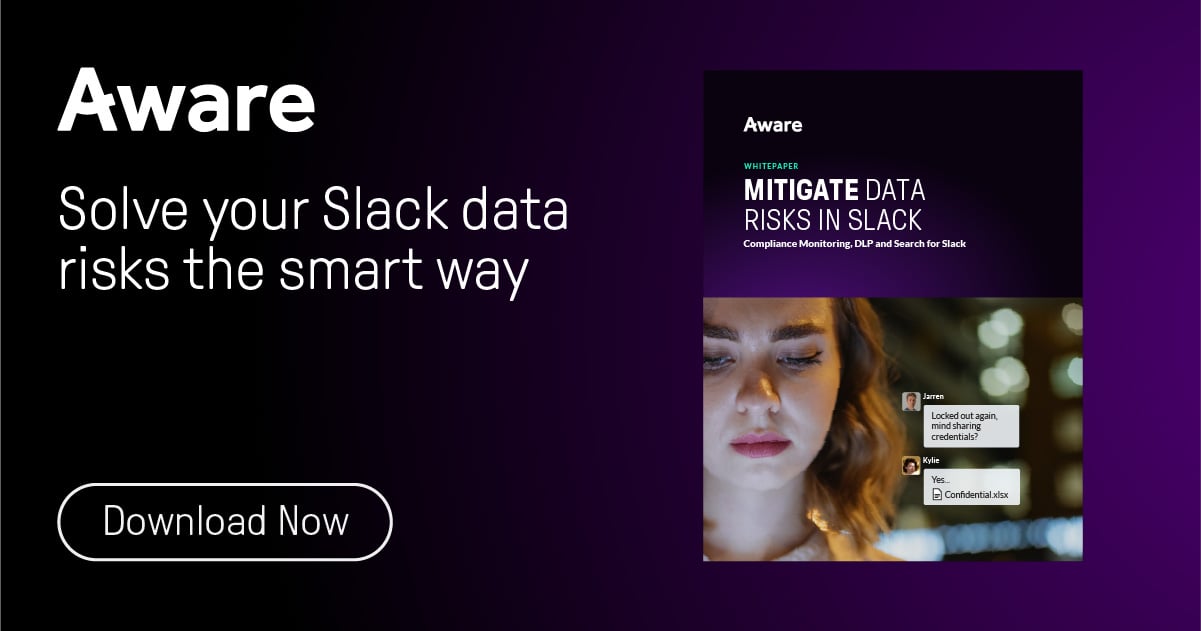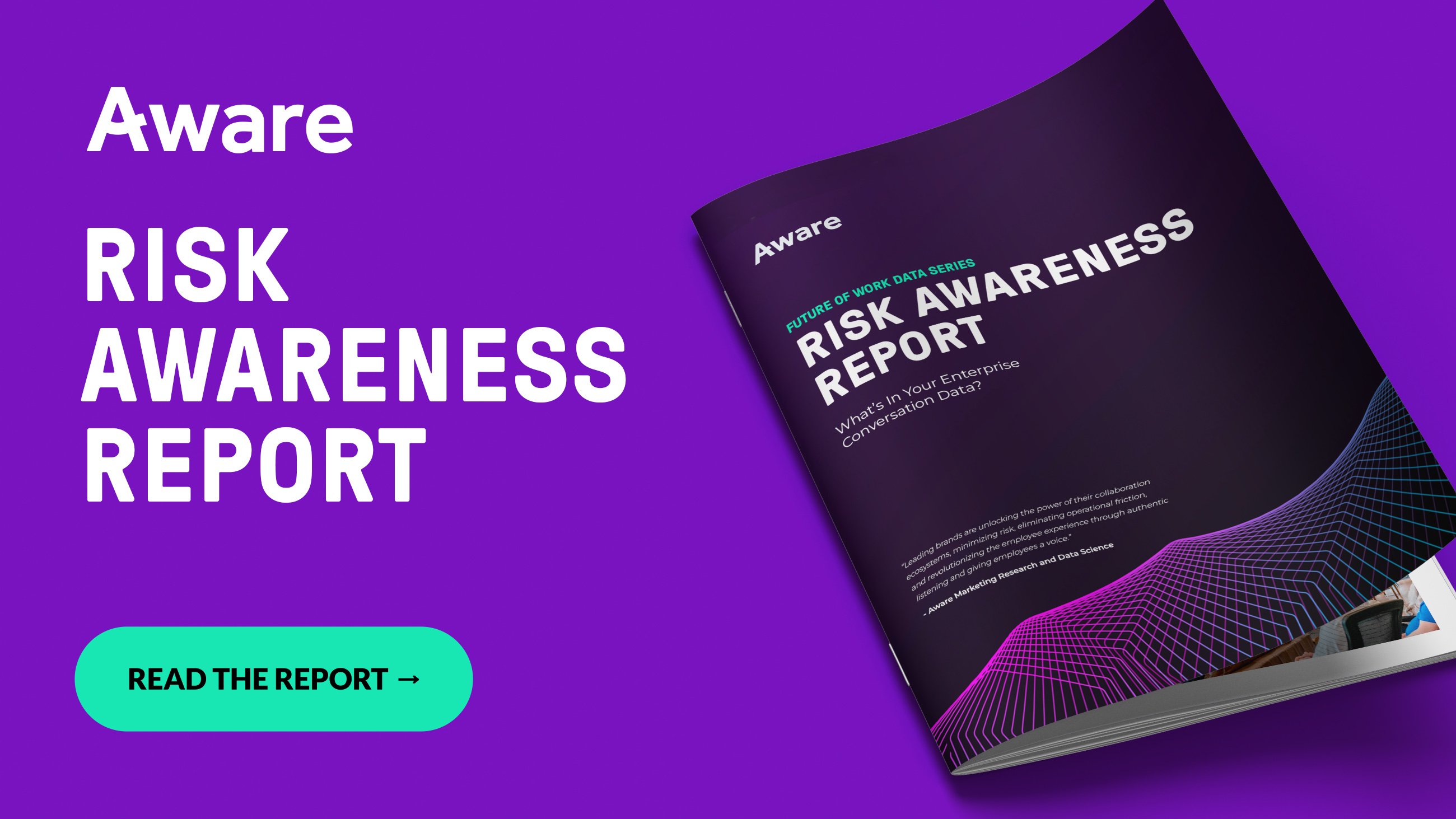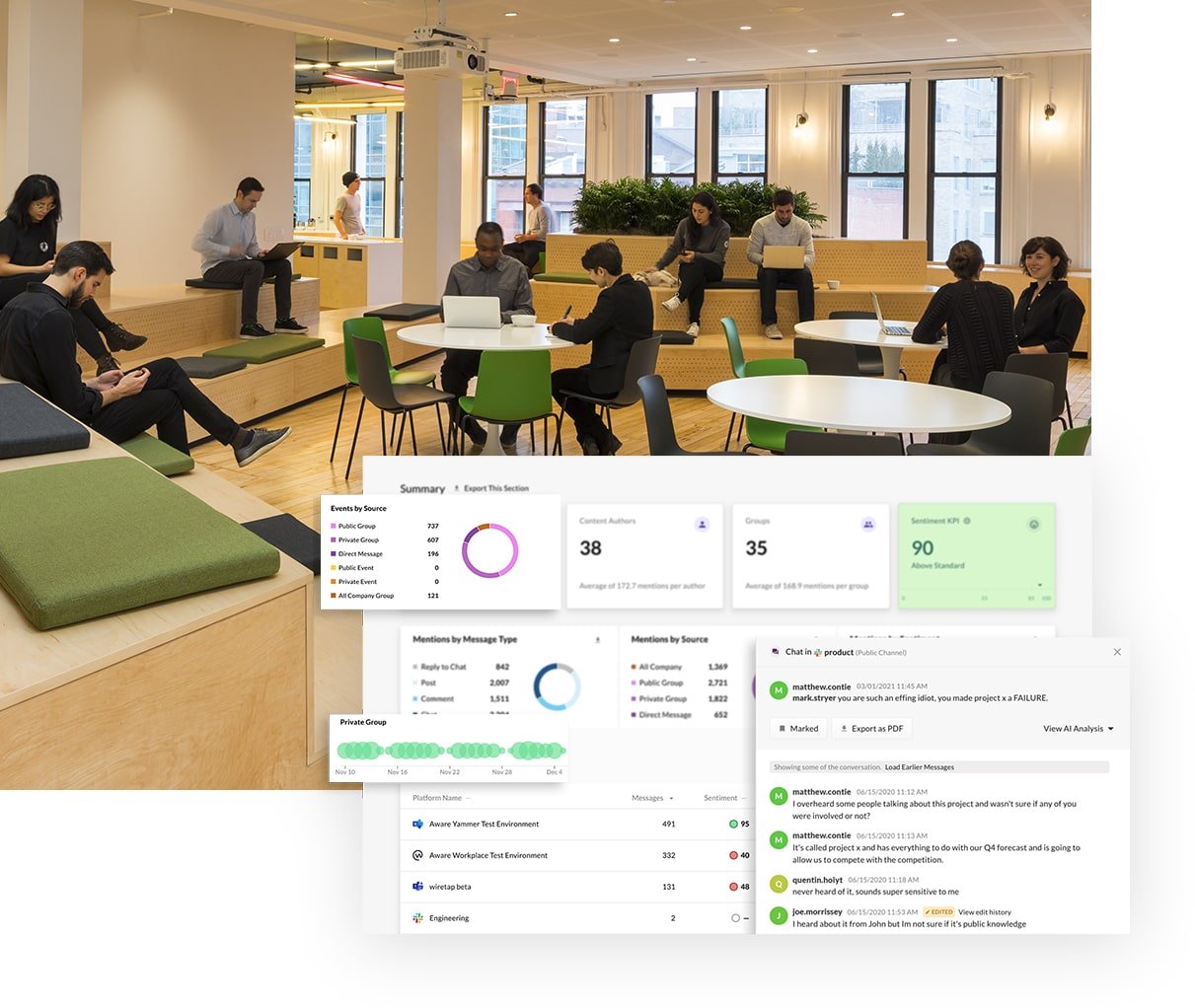The Complete Guide to Exporting Slack Conversations
by Aware
First Published Sep. 2023. Updated Mar. 2024.
Slack is a vital part of the modern business workflow. That makes it essential that business leaders to understand their capabilities for exporting and searching Slack conversations before the need arises, whether for compliance, data analysis, early case assessment, or archiving purposes. In this comprehensive guide, we'll share everything you need to know about exporting Slack conversations.
Contents
- Frequently Asked Questions
- Is it possible to export Slack conversations?
- Where are Slack conversations stored?
- In what format are Slack conversations exported?
- How many messages can you export at once from Slack?
- Can you export private Slack conversations?
- Who can export messages from Slack?
- What third-party tools can export Slack data?
- What Is Slack eDiscovery?
- Steps for exporting a Slack conversation
- Understanding Slack's Export Tool
- Slack Export Limitations
- Exporting Slack Data with Aware
FAQs
Is it possible to export Slack conversations?
It is possible to export conversations from Slack, but how much you can export, and where from, depends on your plan and admin credentials. Admins of Free and Pro Slack accounts can export data from public workspace channels only—for Free plans, associated file attachments are limited to the previous 90 days only. Business+ and Enterprise Grid users can export a complete copy of public, private, and direct messages (DMs) from Slack.
Where are Slack conversations stored?
Slack conversations are stored on Slack's servers, which are hosted on AWS within the United States by default. Business+ and Enterprise Grid Slack plans have the option to choose where their data resides in some regions. Slack does not store messages locally on users’ devices. When admins export Slack data, they can store their local backup or archive wherever they want according to their own information security best practices.
In what format are Slack conversations exported?
Slack exports all conversations in JSON format by default. The only exception at the time of writing is for single user channels and conversations, which can also be exported in TXT format. While JSON files contain all the information administrators need to understand the where, when, and who of each message, they can be confusing and complicated to read. Aware offers an effortless JSON conversion solution that translates Slack exports back into a conversational, searchable format that’s as easy to read as Slack itself.
How many messages can you export at once from Slack?
Workspace owners and administrators can export Slack messages up to their plan’s data retention and visibility limits. For example, users of Free plans can only export public channel content from the past 90 days. Slack does allow additional exports by request in limited circumstances. Admins will have to apply to Slack to access these exports and demonstrate a legal or regulatory need and/or consent from the users in question before the request will be approved.
Can you export private Slack conversations?
Conversations from private Slack channels and direct messages (DMs) are only accessible to administrators on Business+ and Enterprise Grid plans. Users of Free or Pro plans must apply to Slack to export anything other than public channel messages.
Who can export messages from Slack?
Slack workspace owners and administrators are the only users with the authority to export messages.
What third-party tools can export Slack data?
In addition to native Slack export capabilities, some third-party applications also enable organizations to export their Slack data. Aware supports exporting a complete, contextual record of real-time Slack messages, including revisions and deletions, which are stored in a search-ready archive that supports a wide range of compliance, discovery, and regulatory needs.
What Is Slack eDiscovery?
Slack eDiscovery is made possible through the Slack Discovery API for Enterprise Grid, which enables apps like Aware to connect natively to Slack to archive and search Slack messages. The Slack Discovery API also enables data loss prevention (DLP) measures such as identifying and tombstoning sensitive information in real time.
Learn more: Legal holds for Slack
eDiscovery is a legal process used to discover, collect, and analyze electronic information, including Slack conversations, for legal investigations or compliance purposes. The ability to connect an eDiscovery tool to Slack, and the requirement to do so, depends on several factors, including the version of Slack in use, the type of data that requires exporting, the roles of the users performing eDiscovery in Slack, and the likelihood of the business need to be able to perform eDiscovery assessments in Slack datasets.
Steps for Exporting a Slack Conversation
How administrators go about exporting conversations from Slack depends in part on their plan tier.
Free, Pro, and Business+ users:
- Select your workspace in Slack.
- Choose "Workspace settings" in "Settings and Administration."
- Click on "Import/Export Data."
- Navigate to the "Export" tab.
- Select your Export options, such as data range.
- Click “Start Export.”
Completed exports are delivered via email that links to downloadable zip files. Each export contains a JSON document of messages, and links to file uploads. Free plan users are limited to uploads from the last 90 days only. Free and Pro users are also limited to viewing file links only from public channels. Business+ users can view file links from all channel types, depending on their export parameters.
Enterprise Grid users:
- Select your workspace in Slack.
- Choose "Settings and Administration" and click "Organization settings."
- Click on "Security" on the left sidebar and then "Exports."
- Click "Export" next to the data type you'd like to export and select the date range.
- Click "Start Export."
As with other plans, Enterprise Grid admins will receive their zip export link via email. Enterprise Grid plans also have the option to export data from a single user or custodian.
Single-user Slack export
- From the “Exports” menu in the “Settings and Administration” area, choose a user to export their data.
- Select the data range and format for the export and click “Start.”
- Exports will be delivered by email link.
Understanding Slack's Export Tool
A workspace admin’s ability to export data from Slack depends on several variable factors. For example, the version of Slack in use by the organization can determine administrator access to older messages and restricted channels. Other specifications to consider include:
To export data from Slack, you need to consider the following specifications:
- Workspace roles: Owners and administrators are the only roles with permission to export data.
- Type of data available to export: Slack editions dictate what data can be exported, including public and private messages, file links, and messages from individual custodians.
- Data locations: Data from public channels, private channels, and direct messages (DMs) have different privacy restrictions, which can prevent owners and admins of Free and Pro Slack plans from accessing their complete message history.
It’s essential that workspace owners proactively consider these limitations, as they can pose a major impediment to conducting efficient eDiscovery and early case assessment (ECA) in Slack in response to legal and regulatory need.
Slack Export Limitations
While Slack's export tool is useful, it comes with limitations that can reduce visibility into Slack conversations or slow time-to-discovery. By understanding the limitations of Slack exports, administrators and workspace owners can make informed decisions about the value of that data and how to compensate for those limitations if necessary. This may involve utilizing a third-party tool like Aware, which captures a complete record of all messages—including edits and deletions—and archives them in real time.
- Slack exports are slow. Exports can take time to assemble, and admins are obliged to wait until Slack has finished preparing the export before it can be accessed. Additionally, if an admin has to petition Slack to authorize the export, that process can add considerable time to the process.
- There are limited export options. Exports are generated by date or, in limited cases, by message author. In large workspaces, this can create massive export files that are slow and costly to analyze. Without a tool like Aware, there is no easy way to customize the results for faster discovery.
- Slack only exports to JSON or TXT format. Neither format is easily read or searchable, leading to slower analysis and potentially missed context. According to RAND, eDiscovery reviews start at around $1800+ per GB, so large, complex file types add significantly to the cost of investigations in Slack.
- Edits and deletions aren’t captured by default. Unless admins establish Slack retention policies that include edited and deleted messages, these changes will not be captured within Slack exports. Retention policies for edits and deletions are only available on some paid Slack plans and must be set proactively to store a complete record of revisions.
Exporting Slack Data with Aware
Aware delivers a smarter, faster eDiscovery for Slack solution from a centralized AI data platform optimized for speed and accuracy. Our simplified, defensible workflow captures a complete archive of all Slack messages, including edits and deletions, and stores them in a search-ready archive that is immediately accessible. Query the archive by custodian, keyword, channel, and more, the apply smart filters using AI-powered contextual intelligence to quickly identify the who, what, where, when, how, and why of Slack eDiscovery results.







-min.png)





